Main Time class page
ITPG-GT 2040 – 001 (23548) Wednesdays 12:10pm -2:40pm
- A Note About 2020 and COVID-19
- Student Documentation
- Office Hours
- Deliverables
- Assignments
- Readings
- Syllabus
- Class 01, September 02: The Gnomon
- Class 02, September 16: Time Machines 1
- Class 03, September 23: The Ecliptic
- Class 04, September 30: Existing in Time
- Class 05, October 7: Cepheid Variables
- Class 06, October 14: Time Machines 2
- Class 07, October 21: Midterm Presentations
- Class 08, October 28: Time Dilation
- Class 09, November 04: From Data To Meaning
- Class 10, November 11: Final project concept presentations
- Class 11, November 18: The Copernican Principle
- Class 12, November 25: Time Protocols
- Class 13, December 2: Workshop
- Class 14, December 9: Final class
- Class Policies
A Note About 2020 and COVID-19
The unprecedented nature of the coronavirus outbreak means that we will need flexibility, creativity, communication and kindness in order to have a good class in 2020. I know we will succeed! However, I can’t say today that I know exactly how this will happen – we collectively will figure this out. I will make every effort to accommodate your particular situation, and am working to review the syllabus in light of the challenges of remote and asynchronous teaching. When in doubt – email me!
At the outset of the semester, we will be meeting remotely via Zoom during the scheduled class time. We will not meet at ITP. I have listed the course as “blended” because I hope to be able to organize in person meetings later in the semester. However, I don’t know what that will be or when it can happen. So, until further notice, remote meetings.
Student Documentation
| Martin Martin | https://www.martinsquared.com/category/time/ |
| Hanyi Zhang | https://www.hanyizhang.com/time |
| Alvaro Lacouture | http://alvarolacouture.com/category/nyu-itp/time/ |
| Noah Kernis | https://blog.noahkernis.com/tags/time/ |
| Aidan Fowler | https://www.aidanlincoln.com/time |
| Name Atchareeya Jattuporn | https://www.atchareeya-j.com/itp2021/categories/time |
| Jason Tse | https://jason1996429.wordpress.com/category/time/ |
| Casta Zhu | http://castazhu.com/category/itp-blog/time/ |
| Lanni Zhou | https://lannizhoupeace.wordpress.com/category/time/ |
| Helen Zegarra | https://texaotech.wordpress.com/category/time/ |
| Russell Ladson | http://www.russellladson.com/time |
| Tito Rachman | https://blog.tirtawr.com/category/itp/time/ |
| Daniel Fries | https://www.gigglingeye.com/tags/time/ |
| Youngmin Choi | https://www.notion.so/Time-dcd455bd5cf240dd92abc34adf2ccada |
| Schuyler DeVos | https://medium.com/@swd246 |
Office Hours
I have an NYU office hour calendar and will be posting hours there when the semester begins.
Deliverables
An overview of what is due when. For more detail, see Assignments and Readings
- Weekly: attendance and participation, respond to prompts and readings for the following week.
- Between weeks 2 and 7 (October 21): Complete four small sketches that explore ideas of time.
- Week 7 (October 21): Midterm presentations
- Week 10 (November 11): Final concept presentations
- Week 14 (December 9): Final presentations
- Week 5 (October 7): Discuss Rovelli readings
- TBD Week: Discuss Griffiths readings
Assignments
First Half-Semester Sketches
Presented online and in class throughout weeks 2-7
During the first half of the semester, you will finish four time-based “sketches”: small assignments you can use to explore an idea, support your midterm or final concepts, and generally sharpen your thinking about time. “Sketch” here is used very loosely, to allow for a lot of flexibility based on your skill set, available tools, interests etc. Look for inspiration in the syllabus, readings, discussions, or your prior experience. Almost any imaginable (thoughtful!) activity could be a sketch – but I recommend limiting the time spent to between a few hours and a day or two. These are meant to be small assignments that keep you engaged with the material.
Timing: I am being deliberately loose on the timing requirements for these assignments, as the pandemic makes it hard to predict how schedules will work, especially at the start of the semester.
Post on your blog approximately every 1-2 weeks so that four are finished before the midterm. Starting in week three we will use some class time to review any sketches completed by that point.
Types of sketch. It will be gratifying if we have a similar set of pieces to compare and contrast. However, if your skills, access to tools, etc. make doing any of these categories unreasonably difficult, substitute any of the other categories, or propose a different sketch to Jeff.
- – Non-computational media (actual paper sketch, model, sculpture, etc.).
- – Timelapse (>12 hours) or slo-mo (<12 seconds) video; ultra time-stretched audio.
- – Software sketch – something you might do for computational media weekly assignment.
- – Hardware sketch – something you might do as a physical computing lab.
The iframe above displays a simulation of the Botta Uno 24, one of a variety of one-handed watches designed by Klaus Botta starting in 1986. This is an example of a software sketch I made that ends up about, lets say, 70/30 design/code. For time-specific code, it uses P5js and the Javascript Date object, adds a UTC offset and a few other timezones, and modifies the draw loop with a setTimeout callback, since the animation rate for a watch can be super slow. Design-wise, the layout of the watch face is done in code and acts as a kind of design study of the piece. Every dimension is specified in proportions so the sketch can scale like a vector. The $500 watch is built around a $20 24-hour 515.24 quartz movement by Ronda.
Midterm: Observational Instrument
Presented week 7, October 21
Humans forever have been inspired by patterns in the movement of stars, planets, the moon and sun; tides, seasons, animal migrations and the blooming of plants. Inspired by astronomical instruments, select a phenomenon important to you that varies with time. This could be natural, artificial, or a combination; it could span less than a second or more than years. Devise a system (software, hardware, or both) that reflects, records, illuminates and/or amplifies the changing of the phenomenon. To be presented October 21, week 7.
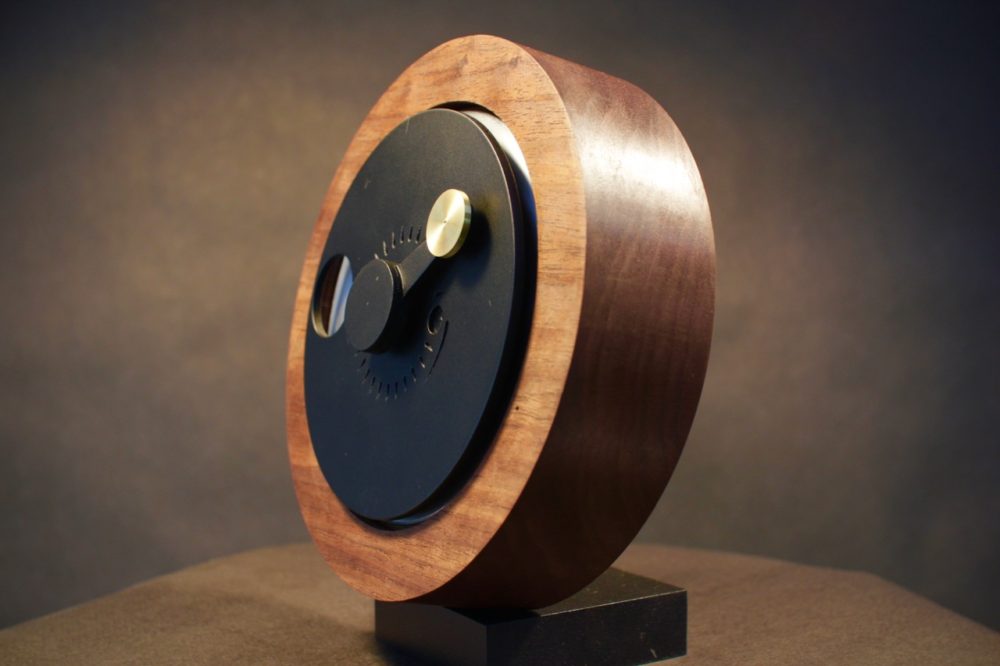
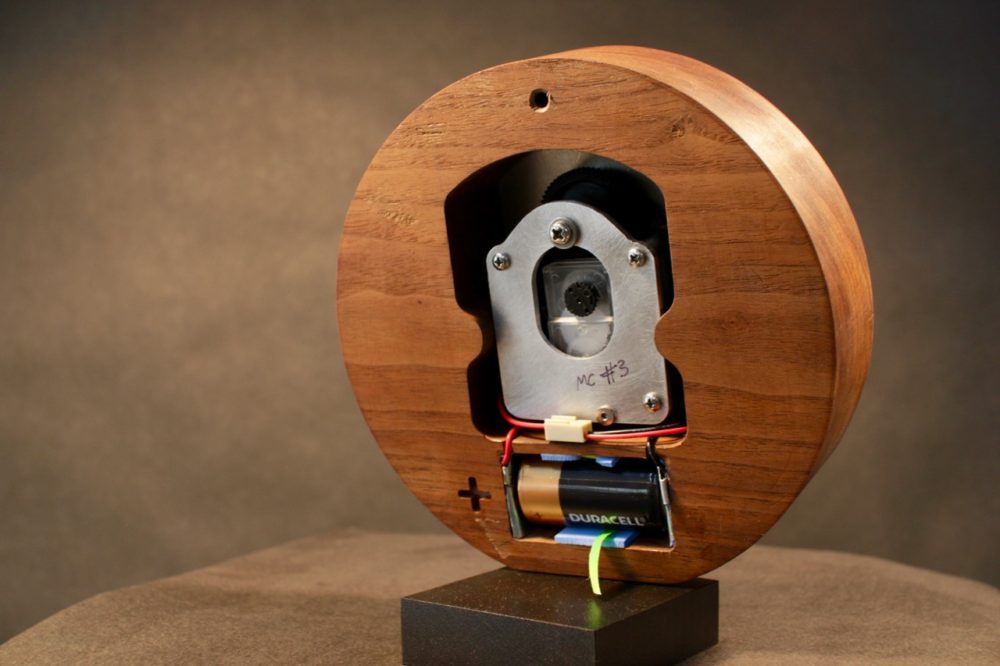
I’ve made several moon clocks, such as the one pictured above. (Video here and here). It might be somewhere between a midterm and final project in this class. The basic mechanism was prototyped in several ways: one version running a tide clock at half speed with a microcontroller, and another frankensteining together a stock 24 hour and tide movements, which worked better. The end products have a degree of finishing more like a final project – carefully machined aluminum and wood parts, turned-brass sun indicator, a nice finish on the walnut, etc.
(The moon clock also exists in sketch form as an online tool for setting the clocks. It uses suncalc to show the correct position for the sun and moon indicators.)
Final Project
Due in class week 14, December 09.
I believe constraints make for good work, but I also feel the first two projects (the instrument, the sketches) are already reasonably constrained. So for your final project, I ask you to create the constraints yourself, as long as the project is related to Time and demonstrates creative and technical excellence. I will check in with you throughout the semester (in and out of class) to discuss progress towards final projects. Elaborating on an earlier project – say, one of your sketches – is perfectly fine.
Documentation
Each assignment and the sketches will have documentation online posted when the project is due. What this is will depend in part on what you choose to create – it could be a video of the project working, and/or a write up of your process and thoughts on the work. Discuss with me if you have any questions.
Readings
For this course, we’ll be reading Carlo Rovelli’s small, beautiful book, The Order of Time.
I also ask that you select two chapters from Jay Griffiths’ wide-ranging and thought-provoking work A Sideways Look At Time (also known as “Pip Pip” in the UK for some reason). Before the midterm I will work with the class to distribute the chapters. You will be responsible for reading your chapters and briefly presenting the ideas to the class at some point in the second half of the semester.
Between Rovelli and Griffiths we will cover, in short order, the history of scientific concepts of time from antiquity to the present, as well as a variety of cultural perspectives on time.
As the semester progresses, I may add links to specific smaller readings (articles, papers, etc) in the syllabus based on what comes up in class discussions.
Throughout the semester I am likely to use slides to illustrate points, guide discussions, and generally help me organize the material I want to cover in each class. These will rarely function as stand alone documentation; however, there may be instances where they can serve as useful references, in which case I will share them with the class. If anyone has difficulty seeing the material in class or accessing it when shared, please let me know so we can work out how best to get the material to you.
Syllabus
Below is an outline; details will be filled in as the semester approaches and throughout the semester as we adjust to the unique 2020 challenges!
Class 01, September 02: The Gnomon
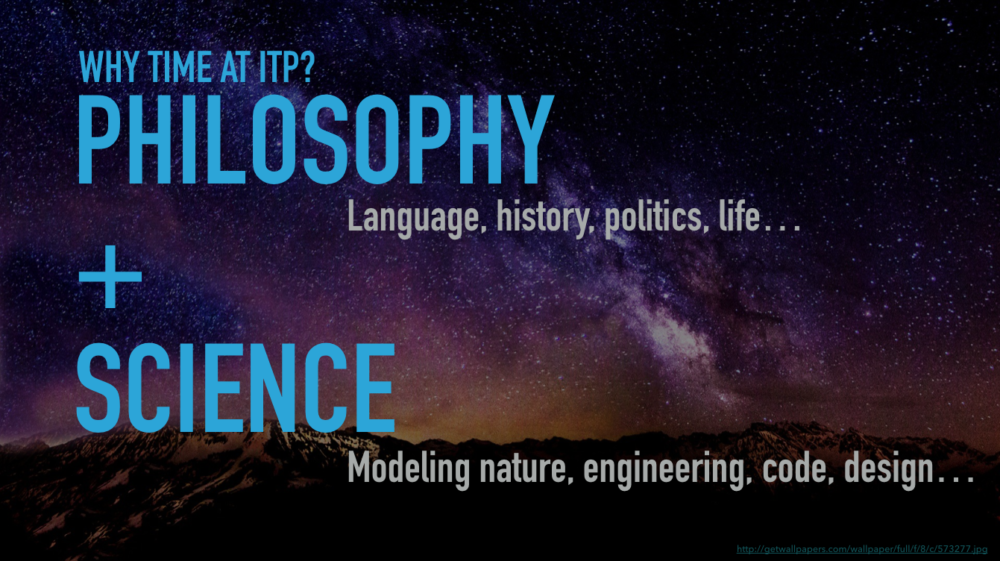
- Introductions
- Overview, big ideas, skills, reasons for the class
- Expectations, assignments, schedule
- Where are you?
- Break
- Gnomon
- Define your sky
- For next class:
- Get the reading
- Set up documentation, send me the link
- Review resources
- Brainstorm sketches and instrument
- Note – the next class is in two week!
Gap because of an “administrative holiday” – classes run on a Monday schedule Wednesday September 9
Class 02, September 16: Time Machines 1
An overview of practical resources for the class: timing motors and clock movements; electronics for timekeeping; microcontroller architecture, software techniques.
Class 03, September 23: The Ecliptic
The reason for the patterns of motion in the stars and planets.
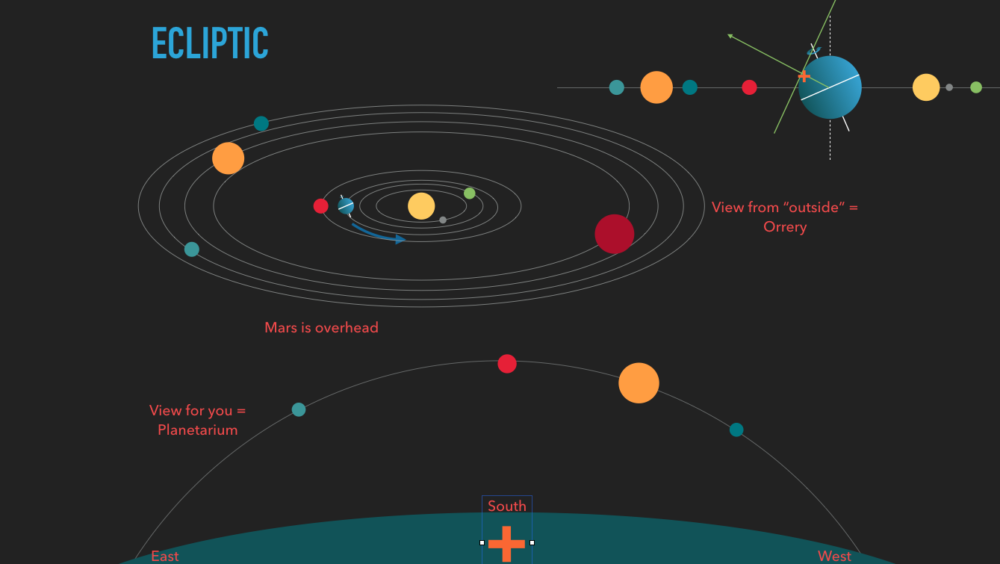
- General Time discussion
- Review sketches posted so far
- Discuss midterm observation instrument ideas
- Presentation: The Ecliptic (in three parts)
- The Earth and the Sun
- The Planets
- The Stars
- For next class:
- Continue working on sketches (ideally, you will have one completed by now, 2-3 by week 5, and all 4 by class 7).
- Post observation instrument concept to your blog.
- Next week I will be demoing software time tools in P5js and Arduino (and maybe Processing). Browse around one or more of the software tools (or find others not on the list) so you can follow along.
Class 04, September 30: Existing in Time
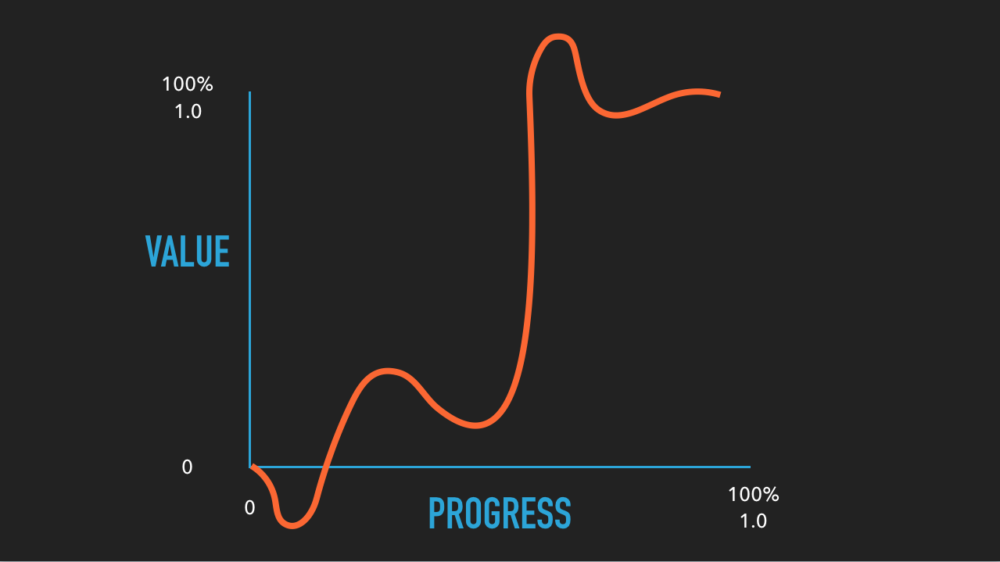
Time in computational media, and the two crucial software patterns for crafting generative experiences in time, as well as a reflection on simulation.
Libraries shown in class: Tasker and Ramp for Arduino. We didn’t get to Greensock, but we’ll pick it up in the future.
Demo videos (private for class, password is orrery). Ramp, Tasker, Next Level
For next week:
- Continue sketches
- Begin execution of the midterm observational instrument
- Finish Rovelli for discussion in class
Class 05, October 7: Cepheid Variables
The history of ideas about the size of the universe, and how a clock in the sky helped us climb the cosmic distance ladder.
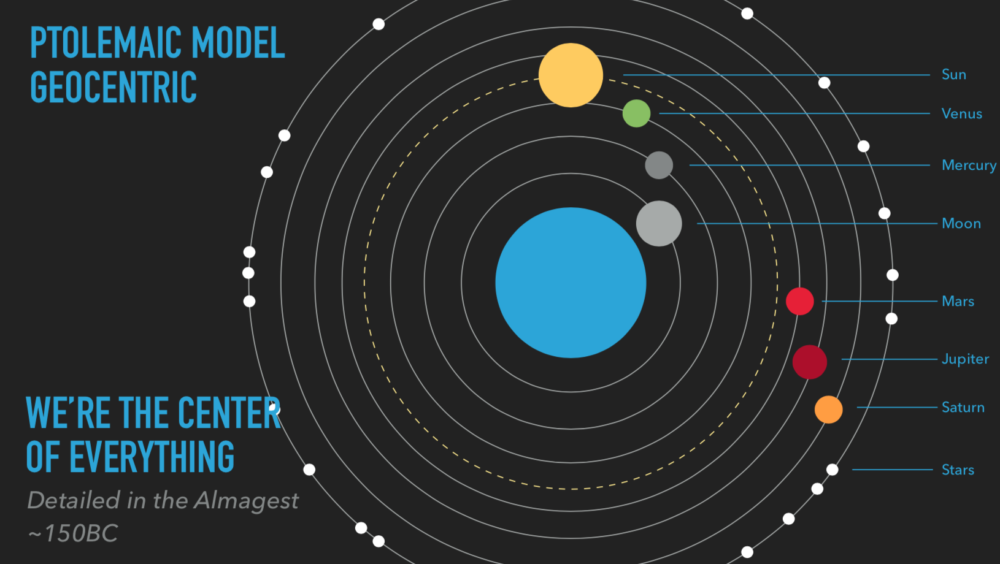
For next week: Continue sketches and midterm. Browse Griffiths and begin selecting chapters for a deeper read.
Class 06, October 14: Time Machines 2
Timing in physical computing. Interrupts, timers, and RTCs.
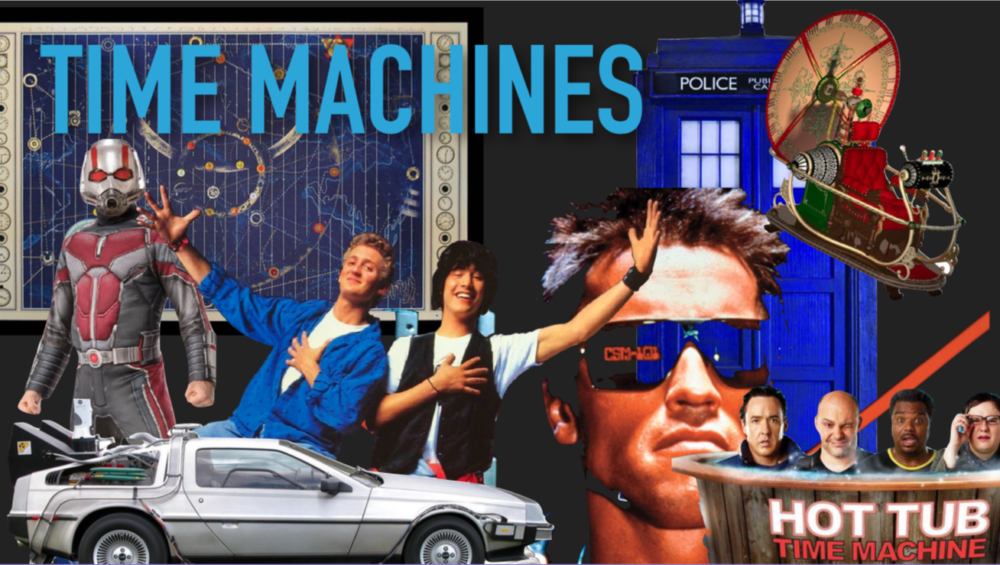
For next week: Finish midterm Observational Instruments.
Class 07, October 21: Midterm Presentations
Class 08, October 28: Time Dilation
Galileo, Newton, Maxwell, and Einstein.
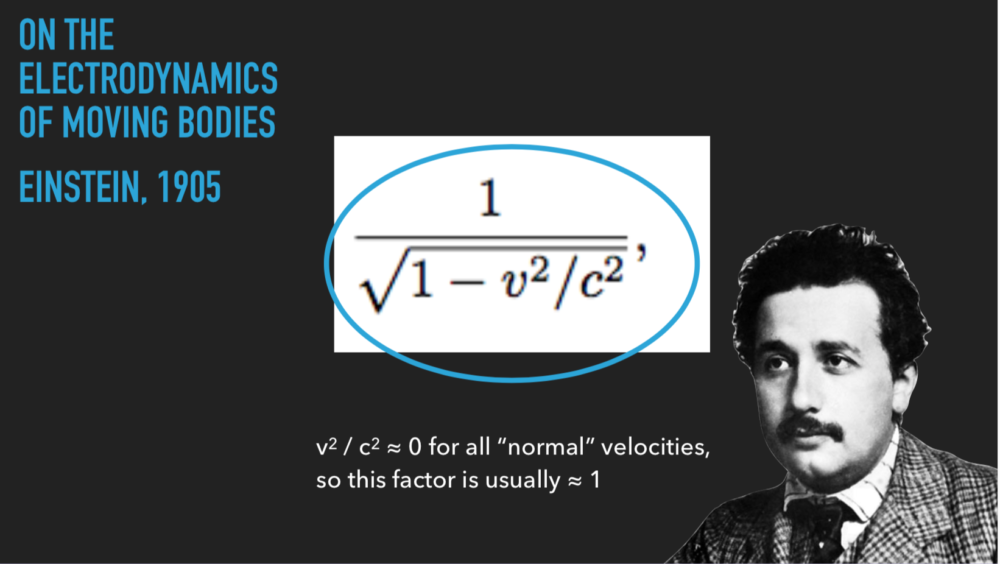
Class 09, November 04: From Data To Meaning
Deriving insight from time-series information. How does code “know” something? Even a simple button, considered in time, can pose an epistemological challenge. In the first example below (any microcontroller with a single button input) the timing of presses and releases are quantified to create increasingly subtle judgements about what the presses “mean”.
In the second example, fast, noisy input is tamed in a variety of waves such as peak-and-hold detection and exponentially weighted averaging. Using methods like these, you might be able to derive more semantic meaning from raw data (“rapidly increasing”, “slowly decreasing”, “stable” etc). Beyond these, you might use ML to classify data, although that shifts the question of meaning elsewhere (who trained the classifier?).
Class 10, November 11: Final project concept presentations
Class 11, November 18: The Copernican Principle
Where are we in time?
Class 12, November 25: Time Protocols
From Julian Days and Unix Time to GPS.
Thanksgiving Break
Class 13, December 2: Workshop
Workshop in support of the final.
Class 14, December 9: Final class
Class Policies
At the outset of the semester, remote Zoom sessions will occur during regular class times. On time attendance will count just as with regular classes; however, I understand that being in different time zones can affect this. If you think you will not be able to regularly attend the online sessions, please let me know as soon as possible so we can make asynchronous arrangements.
While I hope to be able to schedule in-person activities, we may not ever be able to meet as a class entirely in person, so we have to make Zoom as good as possible. It will help me connect with you if you keep your cameras on and your focus on the class. Please resist the temptation to multitask – keep other software to things related to class. As with attendance, I understand not all situations will allow camera-on full access all the time, so please let me know before hand if you think you won’t be able to Zoom this way on any given class.
Grading
The most important thing you can do is arrive zoom to each class on time and be prepared to actively participate and engage with the material. Please put your best effort into assignments and readings, and keep a record of your work online. ITP is pass fail, but the equivalent of a B or higher is required to pass.
- 20% In-class work and participation, readings, discussions.
- 20% Observational Instrument
- 20% Sketches
- 30% Final project
- 10% Documentation
Participation & Attendance
Attendance/participation notes will be updated to reflect remote/asynchronous learning, as per the policies above. If you will miss any class, or will be unable to attend at a certain time, let me know asap.
Personal Device Use
Please limit other software to what is helpful for the class and, especially when your fellow students are speaking, give them your undivided attention.